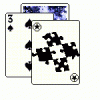Hi!
Im planning a game where part of it is mining a vertical mine in a 2D side-view (similar to the pic below from pocket mine 2).
The ground is composed of distinct tiles (at least this is my first idea) of different material. How to deal with:
- Tiles/ground should collapse (fall down/crumble to the ground) if not enough support is added. You can add wooden support in "tunnels" to keep the ceiling up. Otherwise tiles support each other if you dont dig to aggressivly.
- Crubled tiles should "fill" the terrain where they fall.
- I might include water (from underground pockets) that will sip into the mine and possibly drown the player. This could be simplified as filling "line per line" starting from the bottom until the volume of "loose water" is all deposited on the ground. Or more realistic physics.
Preferably i'd like some "ready to use" toolkit/library (for c++) that can achieve this without too much work for a physics newbie. Tiles/terrain types should have characteristics like "integrity"/strength or similar so that sand collapses easier than dirt (or rock). Or if this can be achieved with some simple technique that I can code myself ![]()
Any ideas?










